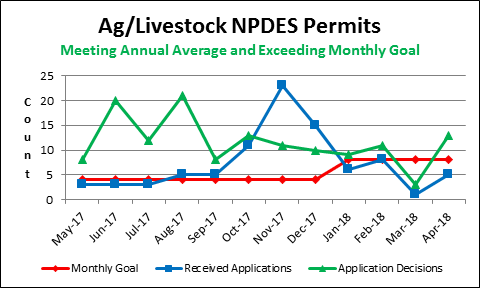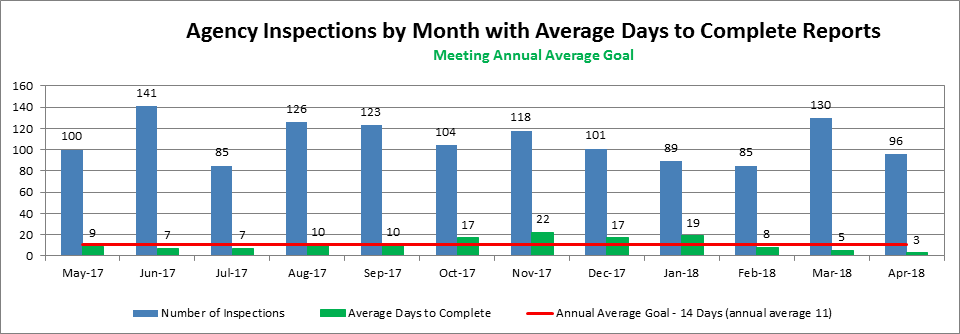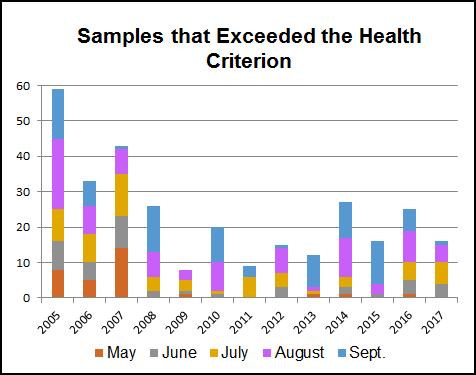April 2018 Metrics Report





Monitoring Water Quality at Public Beaches
Nebraska has monitored public beaches for Harmful Algal Blooms (HABs), also known as Blue-Green Algae, since 2004. In 2018, 54 beaches at 51 lakes will be monitored, as shown on the map to the left. Water at these swimming beaches is tested for bacteria and for microcystin, a common algal toxin, weekly from early May to September 30th.
Nebraska has monitored public beaches for Harmful Algal Blooms (HABs), also known as Blue-Green Algae, since 2004. In 2018, 54 beaches at 51 lakes will be monitored, as shown on the map to the left. Water at these swimming beaches is tested for bacteria and for microcystin, a common algal toxin, weekly from early May to September 30th.
When microcystin levels are above the 20 ppb criteria, established by the World Health Organization, the waters are put on Health Alert and closed to full contact recreation for a minimum of two weeks. Direct contact with algal toxins has been linked to health issues such as headaches, coughing, eye irritation, rashes, and gastrointestinal distress. Long term exposure (inhalation) is now being linked to neurodegenerative diseases, such as ALS, Parkinson’s disease, and Alzheimer’s disease. Children, because of their size, can be more susceptible.



Harmful Algal Blooms occur where there is an excess of nutrients (nitrogen and phosphorous) in lake water. High air and water temperatures, low water levels, and specific weather conditions are likely contributors to the problem. To address the problem, NDEQ works with partners, such as Natural Resources Districts, to encourage voluntary actions to reduce nutrient laden runoff into streams and lakes. Landowners adopt practices such as buffer strips, terraces, cover crops, and no-till farming to lessen runoff.
Emerging Issues/Risks: Historic lead contamination from operations at Northwestern Metals Company has impacted residential properties in Lincoln’s North Bottoms Neighborhood. Sampling conducted by NDEQ at nine of 20 properties in Lincoln’s North Bottoms Neighborhood revealed high levels of lead contamination. It has been determined the contamination was caused by a metal smelting facility, Northwestern Metals Company, which ceased operations in 1961. On April 17th, EPA held a Public Availability Session to inform citizens of current conditions and address questions. Sampling is being conducted in the area and soil will be replaced if levels exceed 400 mg/kg under EPA’s Superfund Program.
Accomplishments: NDEQ staff attended a process improvement “training and collaboration” event with representatives of KS, MO, IA and EPA Region VII. All attendees at the meeting are in various stages of developing and/or implementing process improvement efforts. NDEQ staff shared their experience on huddles and the use of swim lanes and QDIP boards.
NDEQ is pleased to report that atrazine levels in Shell Creek have fallen below the threshold for impairment. This success is attributable to the actions of the Shell Creek Watershed Improvement Group and numerous landowners who adopted various conservation efforts that reduced runoff from agricultural property. A formal celebration is planned for June 15th at a farmstead near Schuyler.
Misc. Items of Note: NDEQ staff collaborated with the Otoe County Sherriff and the Dept. of Agriculture in addressing a situation near Unadilla where a livestock producer is alleged to have caused the death of numerous hogs and goats. NDEQ informed the Sherriff of acceptable disposal options and surveyed the property for possible burial sites. NDEQ is collaborating with the Dept. of Agriculture to develop a standard operating procedure for addressing these instances. Statute dictates that these instances be addressed by the county Sheriff, with possible support from both NDA and NDEQ.